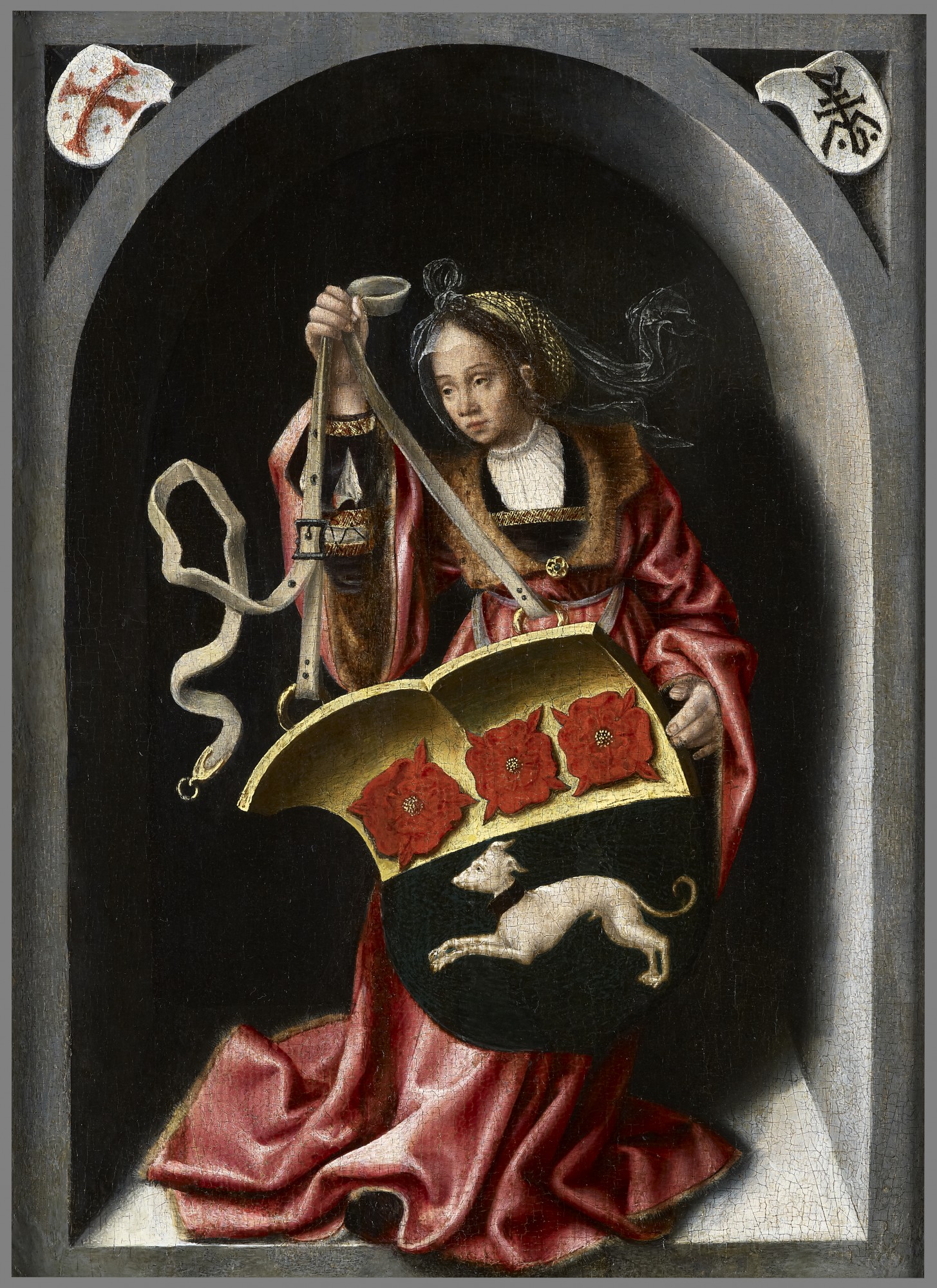


Spencer Bernard Collection, Nether Wynchendon House, Buckinghamshire, England from at least the early 19th century, thence by descent
Private collection, England
A painter and tapestry designer, Bernaert was the son of Valentin van Orley, with whom he probably trained. The first documentary reference to the artist relates to his marriage to Agnes Seghers in 1512. By 1515 he was already established as an independent master in Brussels and in that year received his first important commission: an altarpiece for the chapel of the Confraternity of the Holy Cross in the church of Saint Walburga in Veurne. Van Orley’s work for the church came to the attention of the Hapsburg regents, Margaret of Austria, governor of the Low Countries, who then commissioned him to produce numerous portraits of members of the royal family. Documentation from 1516 records seven portraits of Charles I by the artist. Brussels, considered at that time the principal centre for the manufacture of tapestries, began to be gradually eclipsed by Antwerp, which was emerging as the leading centre for painting. Van Orley took advantage of this becoming one of the principal tapestry designers in Antwerp and registering as a master in the painters’ guild of that city in 1517. By this time he had become the head of a large and thriving workshop. One year later he was appointed official court painter to Margaret of Austria, retaining this position under her successor, Mary of Hungary.
Van Orley’s contemporaries referred to him as the 'Raphael of the Netherlands' for his interpretation of Italian Renaissance ideas and forms. Together with Gossaert, Van Orley is considered one of the leading figures within the Italianate trend in Flemish painting of the early 16th century. He created a theatre-like feeling in his paintings by assimilating Italianate architectural and figural motifs. His work was notably influenced by Andrea Mantegna and particularly by Raphael, whose style he may have absorbed through prints by Marcantonio Raimondi and by Raphael’s own tapestry cartoons, given that no trip by Van Orley to Italy is recorded. His first encounter with such compositions appears to have occurred when Raphael's Vatican tapestry cartoons were woven in Brussels beginning in 1516. Van Orley may also have derived inspiration from Dürer, whom he met in Brussels in 1520.
In the last years of his career from 1525 onwards, Van Orley focused most of his activities on designing tapestries and stained glass including windows for the Brussels Cathedral. His presentation drawings for a series of tapestries commissioned by the Netherlands’ royal family depict the splendour of the lineage of the House of Orange-Nassau from the 1200s to the 1500s. The tapestries, woven in a Brussels workshop and now destroyed, were perhaps lost in a 1760 fire. The richly coloured and detailed drawings themselves were considered such major achievements in draftsmanship that Karel van Mander mentioned the 'very beautiful and richly painted cartoons' in his 1604 biography of van Orley (Het Schilder-Boeck (Haarlem, 1604)). Van Orley’s work is represented in most of the major museums around the world.
This beautiful small composition is almost certainly the outer wing of a triptych. It is a fascinating and intensely curious work. The heraldic shield held by the allegorical figure of a woman makes its likely that it is taken from an altarpiece commissioned by the Damme family from west Flanders. The motif of the running dog is rooted in the family history with variations on the theme emerging over the years. Unfortunately, the significance and meaning of the three Tudor roses above the running dog motif remains elusive. On the shield in the upper left hand spandrel of the arch of the niche is painted a Jerusalem Cross, known also as the Crusaders’ Cross. It is the symbol of the Order of the Holy Sepulchre – a Roman Catholic order of knighthood under the protection of the Pope. This may indicate that the owner of the heraldic shield was a knight. Following the capture of Jerusalem at the end of the First Crusade in 1099, the Order was first formally constituted as an Order of Canons, the successor of which is the modern Equestrian Order of the Holy Sepulchre of Jerusalem. It is considered among the oldest of the military orders of knighthood. Pilgrimages to the Holy Land by Flemish noblemen were not uncommon during the late Middle Ages and early Renaissance with visits to the Church of the Holy Sepulchre, first constructed by Constantine the Great in the fourth century AD, one of the most cherished destinations of the pious. By tradition dating from well before the Crusades, knighthoods were bestowed on worthy men who spent the evening in the Church by its custodians. Pilgrim fraternities or brotherhoods were common in medieval Flanders, pilgrimage being regarded as a source of pride and prestige. On the shield in the upper right hand spandrel is painted a monogram. Difficult to decipher, the letters most likely refer to the name of the owner of the heraldic shield or perhaps the family motto.
We are grateful to Dr. Helene Mund for confirming the attribution to Bernaert van Orley and workshop based on first hand examination of the work.
SOLD: Private collection, France